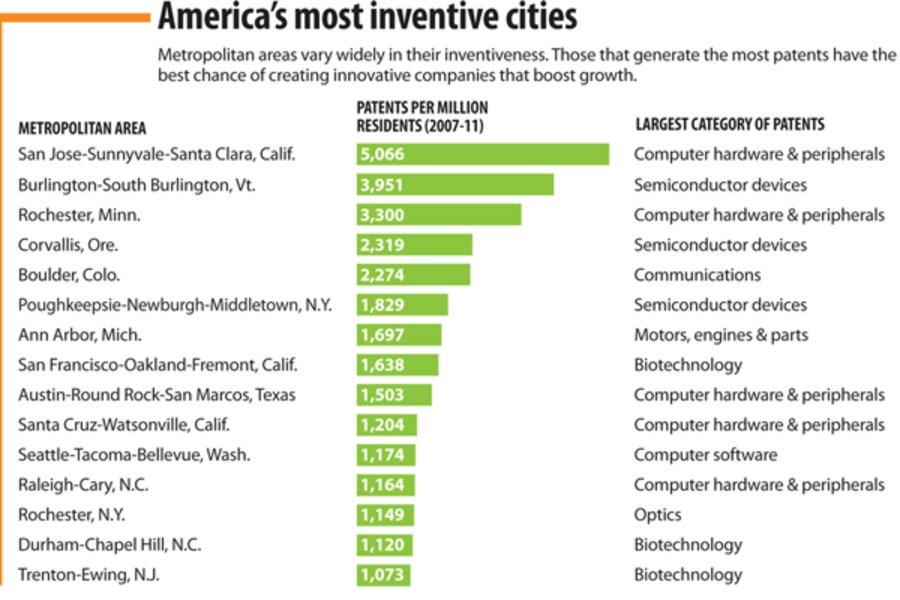Where the next Silicon Valleys might be
Loading...
The 1970s were not kind to Seattle. The Economist magazine had dubbed it "the city of despair." Its big employer, Boeing, had endured multiple setbacks and had shed jobs. To counteract the gloom, two real estate agents tried a little humor with the billboard message "Will the last person leaving Seattle turn out the lights."
Then in 1979, the founders of Microsoft moved their small software company from Albuquerque, N.M., to Seattle, their hometown. At the time, the cities had roughly similar labor markets. Seattle had just five more college graduates per 100 residents than Albuquerque did.
But with the subsequent boom of Microsoft, Seattle has transformed itself into one of America's premier Knowledge Economy cities. It now has 45 more college graduates per 100 residents than Albuquerque has. Those graduates, who in 1980 outearned Albuquerque's by $4,200 a year, now outearn them by $14,000.
The city's cultural and social scenes are vibrant. Seattle's crime rate, which was higher than Albuquerque's in 1979, is now lower.
"We keep thinking of the US as one labor market," says Enrico Moretti, an economist at the University of California at Berkeley and author of the book "The New Geography of Jobs." "The reality is that there are 300 labor markets" – one for each metropolitan area.
The innovative ones grow and prosper. They not only create good jobs for college-educated workers, they also enhance the pay of lower-skilled workers. "Different skills tend to complement each other...," says Mr. Moretti. "They need each other."
But in less innovative urban areas, education levels, productivity, and pay stagnate. The gap between the highly innovative and less innovative metros is something Moretti calls the "great divergence." Workers in the top-tier cities earn two to three times what their counterparts do in the bottom tier. And the gap is growing.
So which city will be the next Seattle, transforming itself into an innovation hub?
While no one knows for sure, one hint may come from patents. Cities whose residents have been granted the most patents up to now – including San Jose, Calif.; San Francisco; and New York – are already generating lots of high-paying jobs. But a smaller city with a high number of patents per capita may be a future contender. A new study by the Brookings Institution identifies high-patent cities in this category, including Burlington, Vt.; Corvallis, Ore.; and Trenton, N.J.
Perhaps the next Microsoft will come from one of their inventors. "A resident living in one of the 100 most inventive metropolitan areas is seven times more likely to invent a patent than someone living in a lower ranked metropolitan area," the Brookings study concludes.







